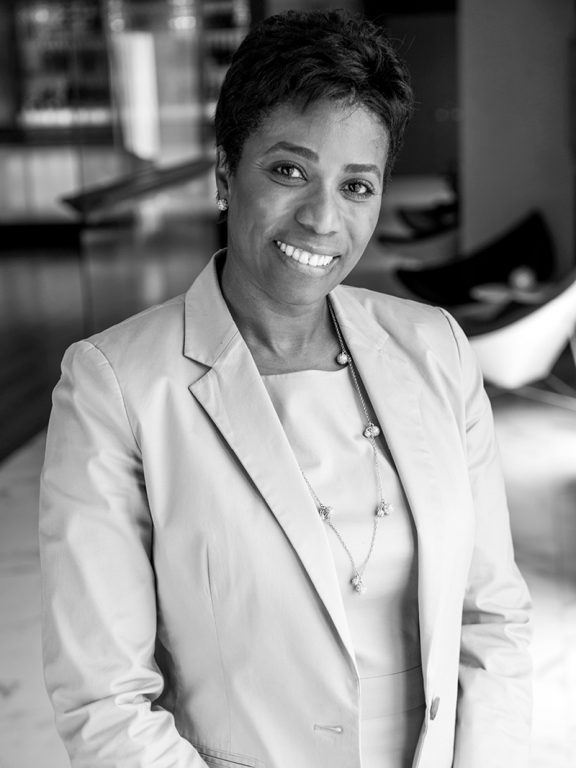The Women in the Workplace 2017 research study by McKinsey & Company and LeanIn.org once again highlights what we already know: Women remain underrepresented at every level in corporate America, despite earning more college degrees than men for 30 years and counting. The call to action remains the same: There is a pressing need to do more. Most organizations realize this—company commitment to gender diversity is at an all-time high for the third year in a row. So why, as the study laments, does progress continue to be so painfully slow—and perhaps even stalled?
It’s been 55 years since President Kennedy signed the Equal Pay Act into law, yet a gender pay gap still exists. The “glass ceiling” is still a thing. Women are still being promoted at significantly lower rates than men. Companies continue to hire fewer women directly into senior-level positions. Many women are still not considered to be serious about their careers, because they happen to bear the greater responsibility for child and elder care. There is no consensus on the one right means of changing the status quo. What there is consensus on, however, is that we still have a long way to go to get to gender equality in corporate America.
One attempt to drive change has been the establishment of women’s initiatives within companies. But many of these initiatives have not been successful for a variety of reasons, including the following:

Don’t miss the latest drinks industry news and insights. Sign up for our award-winning newsletters and get insider intel, resources, and trends delivered to your inbox every week.
- They have been built by women for women—with women bearing the burden to lead the change they want to see, and men relegated to the sidelines.
- They are often built with no clear articulation of the desired result but rather comprise a series of short-term tactical steps that are not tied to a long-term holistic strategy.
- They are often focused solely on changing women themselves: from the way we speak, dress, and think to the way we network and lead.
- They often do not have a clear organizational structure (with built-in succession planning) and have been tied primarily to a few “champions” within the organization.
- They have often not been tied directly to the driving of business performance.
So how can we accelerate the speed of change for gender equality through successful women’s initiative programs within companies? Here are three steps that companies can take right now:
1. Build a Strategic Plan That Answers These Questions
- What are the company’s core values and how does the initiative align with those values?
- What is the initiative’s vision for the future?
- What specific steps will the initiative take to make the vision a reality?
- Who are the key stakeholders and how will they be engaged? (Depending on the strategy, this could include individual or groups, including an advisory board, shareholders, senior management team, employees, suppliers, customers, industry, trade, and consumers.)
- What are the necessary resources?
- What is the framework within which efforts can be successful?
2. Develop a Stakeholder Engagement Plan
Prioritize your stakeholders in the context of your broader objectives and develop a Stakeholder Engagement Plan with this prioritization in mind. In developing your plan, be sure that you understand these two things:
- What are your key stakeholders saying, thinking, feeling, and doing?
- What do you want them to be saying, thinking, feeling, and doing?
Finally, remember that stakeholders will want to know why they should care, so build your Stakeholder Engagement Plan to provide clarity, create alignment and move people to want to take action.
3. Develop an Organizational Structure to Drive Performance and Accountability
Imagine your company without a functioning organizational structure. How would that work? Undoubtedly, people would be confused, with no clear understanding of roles or responsibilities or even how work should get done. In addition, there would be no built-in mechanism for decision making, development, and continuity.
A successful women’s initiative must have a clearly defined and highly functioning organizational structure that is larger than one or a few individuals. Roles and responsibilities must be clearly defined, including the chain of command, for strategic cohesiveness and decision making.
Senior leaders—men and women—in the company must play a key and integral role, sitting on the advisory board or steering committee, chairing a working committee, and participating in activities. The responsibilities of leaders of the initiative must be viewed as a part of their assigned scope and not as “volunteer” work, and their performance in these activities should be measured as a part of their overall performance review. The bottom line: Key leaders should be held accountable for achieving results across a company, including the Women’s Initiative Program.
Marlene Gordon is the vice president and general counsel for Bacardi North America Corporation and a member of Bacardi’s North America Leadership Team and Global Legal Leadership Team. Gordon also chairs Bacardi’s Women in Leadership Program, an initiative to encourage the full potential of current and future female leaders at Bacardi.










